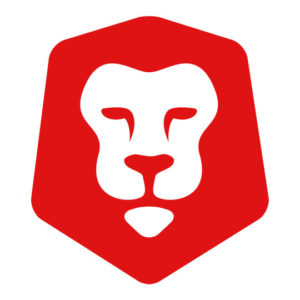4 Keys To Effective Communication
Learning cultures don’t succeed because a number of individuals in siloes become more skilled.
Learning cultures succeed because they’re set up for teams to rely on one another to learn and help one another grow. Stellar learning teams help, teach, and learn in tandem with each other.
Effective communication is vital to successfully fostering a learning culture.
When communication lapses, companies are unable to harness the full power of their cultures and teams. Productivity stalls, relationships suffer, and morale drops.
Effective communication is essential for creating a thriving organizational culture that supports ongoing learning and growth.
I’ve parsed this into 4 keys to effective communication:
- Clear objectives
- Clear purpose
- Clear messaging
- Clear communication channels
What this looks like down the road is a democratized culture of learning, teaching, and collaborating powered by your company’s very own shared learning language.
Conversational Culture
When we think of communication, it’s often just about one-time information exchange: person to person, server to server, A to B. But communication is a much more powerful tool when it’s used to shape the culture of a shared learning environment.
Learning cultures are collaborative and supportive; they encourage open communication. Read this article to see how Xerox exemplifies this approach.
Imagine students in a classroom. The teacher encourages them to ask questions and share ideas freely. This environment fosters a sense of inquiry and exploration. The class is more likely to be engaged and come away with a deeper understanding of the day’s lesson.

Jeffrey Hamilton/Unsplash
Similarly, the teacher who takes the time to listen to students and offer meaningful and actionable feedback regulates a learning environment that is both safe and challenging.
When everyone mindfully and effectively communicates, we co-create learning environments and experiences that are more enriching, enjoyable, and effective for everyone involved.
But what does good look like? Where to start? It seems ambiguous at first.
4 Keys To Effective Communication
There are 4 facets of communication that need to be in place for an organization to harness the full power of its learning culture. Let’s take a look at each one.
Clear Objectives
Employees need to know the roles they play and the why behind the projects they have been given. When everyone understands their own objectives and how they affect the company’s objectives, it becomes easier for teams to stay focused and aligned with each other.
Clear objectives ensure that every team member is on the same page and knows what they need to do in order to reach success.
Company leaders must come to terms with what those big objectives are (and realize they are subject to change over time, and that’s okay). When they share them with everyone, it becomes easier for people to understand how their roles fit into achieving those objectives, and to then collaborate as a cohesive unit toward setting better objectives.
We can’t let people wonder what they should be striving toward.
Clear Purpose
Just as important as setting objectives is to make sure that everybody knows why they’re pursuing them in the first place.
When people understand the purpose behind their work, it empowers them with ownership and a deeper connection to the company’s mission and to their team.
It becomes clear—and ideally recognized and rewarded—that the things they do add up to something bigger. Motivation and engagement follow.

Denise Jans/Unsplash
Leaders should strive to communicate a vision in a way that connects with employees on an emotional level. When people connect the dots between their daily actions and the team’s future, they contribute to success in a much more direct and meaningful way.
Clear Messaging
Once leaders have communicated clear objectives and people feel a connection between their own purpose and that of the company, it’s time for everyone to start talking about how to get there.
Effective communication requires proper messaging, both internally and when speaking to audiences or clients. Employees should be able to understand and speak the same organizational language.
Leaders must set an example by sticking to a company’s shared language, using it in conversations and presentations, and ensuring that everyone else does the same.
The more consistency there is in how information is transmitted, the easier it is for teams to stay on track and work together.
This also entails defining terms, agreeing (or disagreeing) on language, deciding on processes, and investing in simple but effective messaging tools so conversations can be consistent across the organization.
The more clarity there is in communication, the easier it becomes to create a shared learning experience and build trusting relationships.
Clear Communication Channels
The final key to effective communication is establishing clear channels for communication. Everyone needs to know how and when they should communicate, and which of their many connections are the appropriate ones to be talking to for the problems at hand.
They should know who has the authority to make decisions, and how they can leverage their network of colleagues to solve problems, teach each other, and contribute to a growing culture of continuous learning.
Leaders need to make sure everyone has access to the right tools that enable them to effectively communicate, as well as enough freedom to learn in ways that work best for them.
Building a learning culture is not just about having access to content, but also ensuring it’s shared in an organized manner across all relevant channels.
When communication is clear, it becomes easy for teams to collaborate and accomplish the big objectives they set out to achieve. Clear communication channels become a roadmap for success, one that gives people the confidence and support they need to learn and grow with their colleagues and with the whole organization.

Margarida Afonso/Unsplash
Conclusion
Clear objectives, purpose, messaging and channels are essential for successful communication. When these four are in harmony, everyone becomes capable of learning more, accomplishing more, and understanding their roles better. This creates a unified vision that leads to greater engagement and productivity from employees.
Effective communication creates a strong foundation for continuous learning and growth. By nurturing an environment where employees can understand their purpose and feel connected to it, leaders create a culture of learning that empowers teams to reach their fullest potential.
Learning is a process. It needs time. It needs other things too, like reflecting and a bias for action. More than anything, it needs clear communication, through and through.

Curious Lion Inc.
Curious Lion is not your typical learning company. We’re like a ghostwriter. You stay in the spotlight while we support you behind the scenes with brainstorming, strategy, learning design, and production.
Originally published at curiouslionlearning.com.
